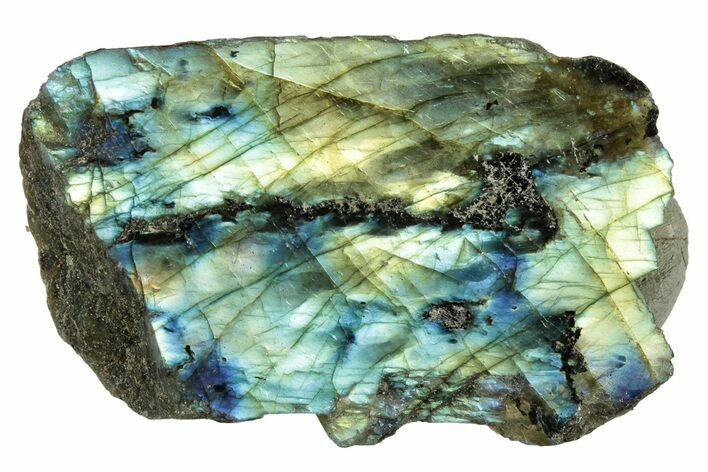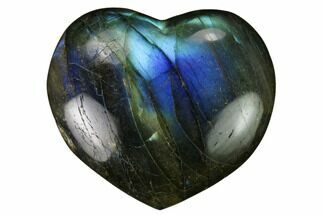Small Single Side Polished Labradorite Pieces - 1 1/2"+ Size
This is gorgeous pieces of labradorite that have been highly polished on one face to reveal the their amazing iridescent color play. They shine with brilliant blues, yellows, purples and oranges depending on how the light hits them.
These pieces mostly range from 1 1/2 to 2 1/2" wide averaging over 2". The photos are representative of them, but they are quite varied in exact shape, size, and patterning. Quantity discounts are available.
These pieces mostly range from 1 1/2 to 2 1/2" wide averaging over 2". The photos are representative of them, but they are quite varied in exact shape, size, and patterning. Quantity discounts are available.
About Labradorite
Labradorite is a feldspar mineral most often found in mafic igneous rocks. Some specimens of labradorite exhibit what is called a "Schiller effect"; a strong play of iridescent blue, green, red, orange, and yellow colors. Labradorite is so well known for these spectacular displays of color that the phenomenon is also known as labradorescence. Specimens with high quality labradorescence are often polished and used as gemstones.
The labradorescence is not caused by the colors breflecting on the surface of the specimen. Instead, light enters the stone, hits a twinning crystal lattice surface within the stone, and reflects from that. The color seen is the color of light reflected from that twinning surface. Different twinning surfaces within the stone reflect different colors of light. Light reflecting from different twinning surfaces in various parts of the stone can give the stone a multi-colored appearance.
Labradorite is named after Labrador, Canada, where it was first found. Today, the most prolific deposits for most commercially available labradorite occur in Madagascar and Russia.
Labradorite is a feldspar mineral most often found in mafic igneous rocks. Some specimens of labradorite exhibit what is called a "Schiller effect"; a strong play of iridescent blue, green, red, orange, and yellow colors. Labradorite is so well known for these spectacular displays of color that the phenomenon is also known as labradorescence. Specimens with high quality labradorescence are often polished and used as gemstones.
The labradorescence is not caused by the colors breflecting on the surface of the specimen. Instead, light enters the stone, hits a twinning crystal lattice surface within the stone, and reflects from that. The color seen is the color of light reflected from that twinning surface. Different twinning surfaces within the stone reflect different colors of light. Light reflecting from different twinning surfaces in various parts of the stone can give the stone a multi-colored appearance.
Labradorite is named after Labrador, Canada, where it was first found. Today, the most prolific deposits for most commercially available labradorite occur in Madagascar and Russia.
$5
Quantity Discounts
3 to 9 Pieces
$4
10+ Pieces
$3
MINERAL TYPE
Labradorite
LOCATION
Madagascar
SIZE
Most 1 1/2 to 2 1/2" Wide
PRODUCT ID
P-955
 Reviews
Reviews












